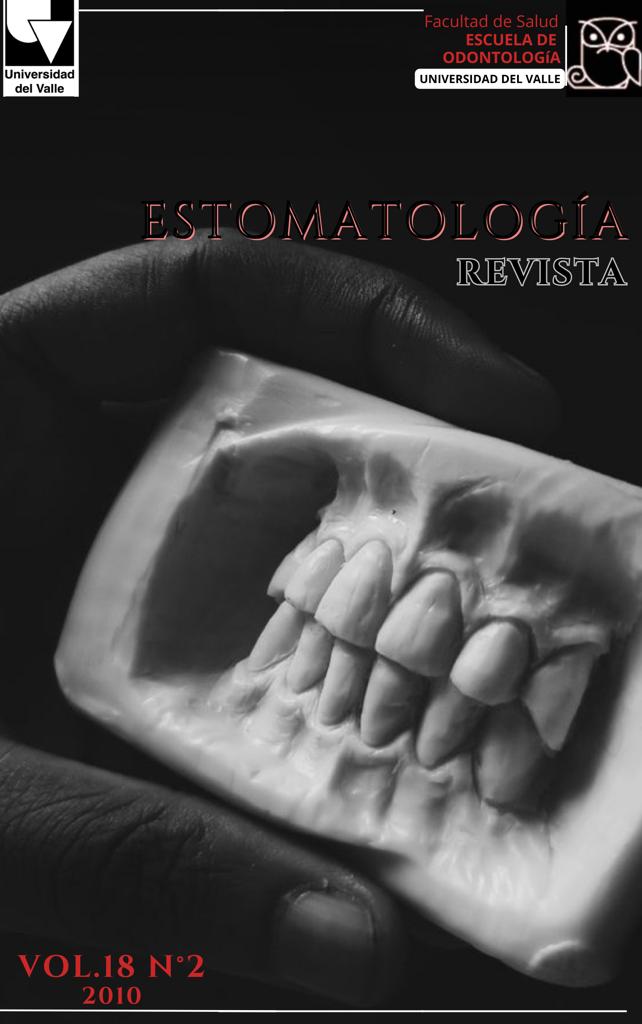Non instrumented endodontic technique using CTZ paste
Keywords:
Pulpectomy, CZT paste, obturation materials, primary teethMain Article Content
Dental treatments in children are very complex to carry out and depend on different factors to obtain a clinical success, mainly depending in: selection of materials, clinical abilities and patient ́s cooperation.
Objective: To know the biological properties of the CZT paste, as well as its advan-tages and disadvantages compared with other materials currently used in pulpar therapy in children.
Method: A pulpectomy treatment was carried out by NIET (non-instrumented endodontic technique in the Pediatric Dentistry Clinic of the Postgraduate School, School of Dentistry, UNAM. All patients presented pulpar necrosis.
Results: Recent studies have shown that the components of the CZT paste are more effective in pulpectomy treatment than other materials, finding asymptomatic patients after two weeks of treatment with this paste. Radiographic examination after 2, 4 and 6 months revealed a reduction or stabilization of the periapical lesion.
Conclusions: The CZT paste has shown excellent results and reduces the bacteria concentration to minimal level. The characteristics of this paste allow the clinician to carry out pulpar treatment in less time and to obtain superior results comparing with conventional techniques.
2. Fuks, AB. Pulp therapy for the primary dentition. In: Pinkham JR, Casamassimo PS, Fields HW Jr, McTigue DJ, Nowak A, eds. Pediatric Dentistry: Infancy Through Adolescence. 4th ed. St. Louis, Mo: Elsevier Saunders Co; 2005, 375-93.
3. American Academy of Pediatric Dentistry. Guideline on Pulp Therapy for Primary and Immature Permanent Teeth. 2009.
4. Lo EC, Holmgren CJ, Hu D, Van Palenstein Helderman W. Six-year follow up of atraumatic restorative treatment restorations placed in Chinese school children. Community Dent Oral Epidemiol 2007; 35(5):387-92.
5. Hibbard ED, Ireland RL. Morphology of root canal of the primary molar teeth. J.
Den. Child. 1957; 24(4):250-7.
6. Bengston AL, Bengston NG. Efeito da instrumentação endodôntica em molares decíduos. Rev Assoc Paul Cir Dent 1993; 47(5):1149-54.
7. Faraco Jr IM, Percinoto C. Avaliação de duas técnicas de pulpectomia em dentes decíduos. Rev Assoc Paul Cir Dent 1998; 52(5):400-4.
8. Goerig AC, Camp JH: Root canal treatment in primary teeth: a review. Pediatr Dent 1983; 5:33-37,
9. Rabinowitch BZ: Pulp management in primary teeth. Oral Surg Oral Med Oral Pathol 1953; 6:542-50, 671-6.
10. Castagnola L, Orlay HG: Treatment of gangrene of the pulp. Br Dent J 1952; 93:93-102.
11. O ́Riordan MW, Coll J: Pulpectomy procedure for deciduous teeth with several pulp necrosis. J Am Dent Assoc 1979; 99:480-2.
12. Barros, G. Biocompatibility evaluation of an antibiotic paste after pulpotomy in dogs. Braz J Oral Sci 6(22):1397-1401.
13. Denari W. É possível tratar dentes decíduos com fístula sem instrumentação dos condutos?. Revista da APCD 1996; 50 (2): 186-7.
14. Walther L. Endodontic treatment for primary molars. Rev Gaucha Odontol 1965; 13(1):8-11.
15. Costa CAS, Benatti Neto C, Abdalla RE, Gonzaga HFS, Lia RCC. Estudo preliminar da compatibilidade biológica de um cimento à base de antibiótico e óxido de zinco e eugenol quando implantado em tecido subcutâneo de rato. Rev Odontol Univ São Paulo 1994; 8(1):65-70.
16. Saraiva APVP, Ferreira JMS, Valença AMG. Utilização da técnica CTZ em Odontopediatria. Odontologia Clín Científ 2005; Supl. 51:35-60.
17. Miziara ID. Curso Prático de Antibioticoterapia/O uso da antibioticoterapia no tratamento das doenças bucais. jbc, 1998; 2(7):57-67.
18. Andrade ED. Terapêutica Medicamentosa em Odontologia. São Paulo; Artes Médicas; 1998.
19. Piva F, Medeiros I, Junior F, Estrela C. Antimicrobial activity of different root canal filling pastes used in deciduous teeth. Materials Research 2008; (2):71-3.
20. Amorim L, et al. Antimicrobial analysis of different root canal filling pastes used in pediatric dentistry by two experimental methods. Braz Dent J 2006; 17(4):317-22.
Downloads
Los autores/as conservan los derechos de autor y ceden a la revista el derecho de la primera publicación, con el trabajo registrado con la licencia de atribución de Creative Commons, que permite a terceros utilizar lo publicado siempre que mencionen la autoría del trabajo y a la primera publicación en esta revista.

